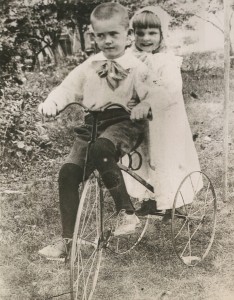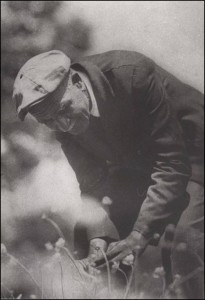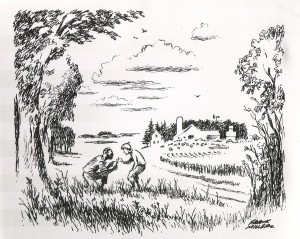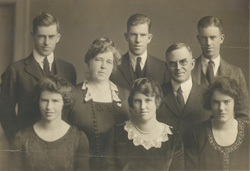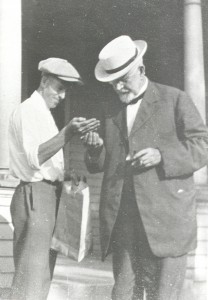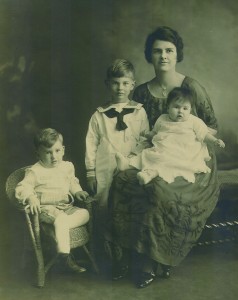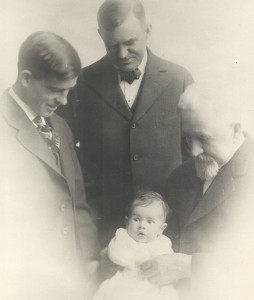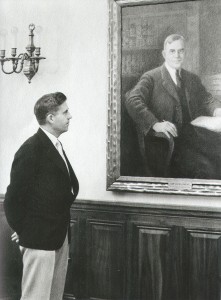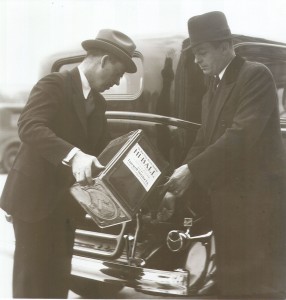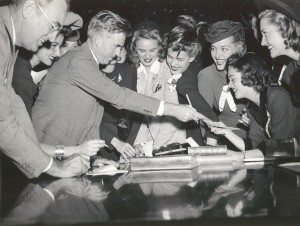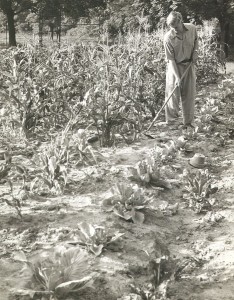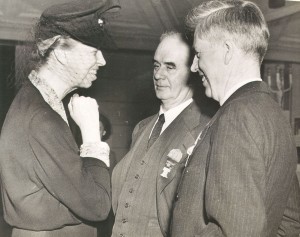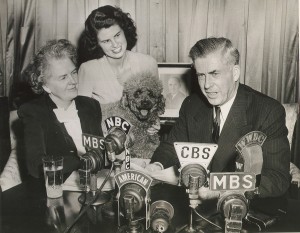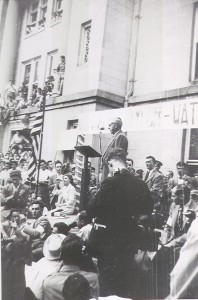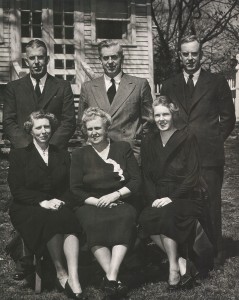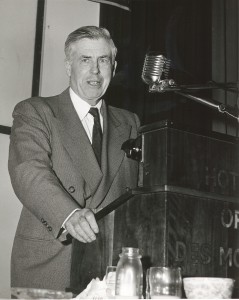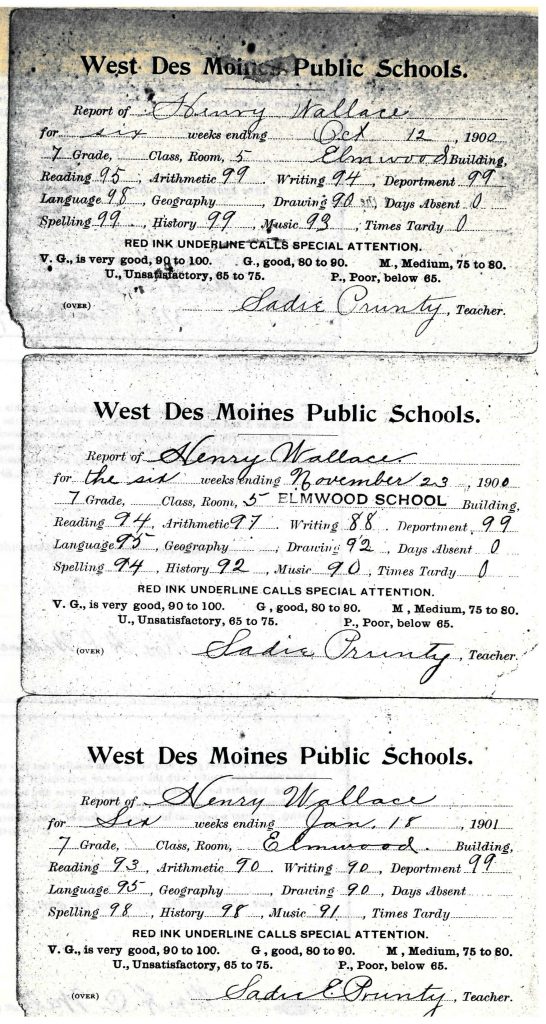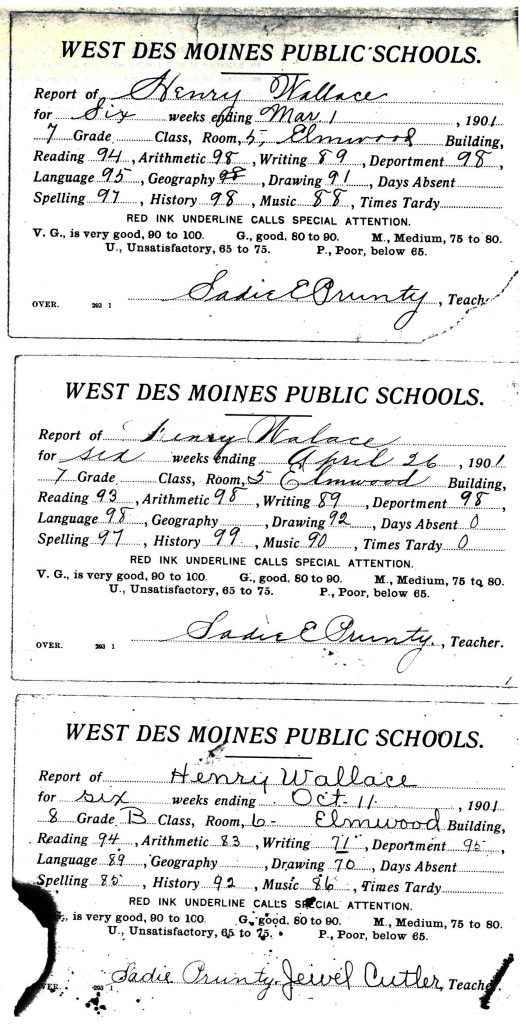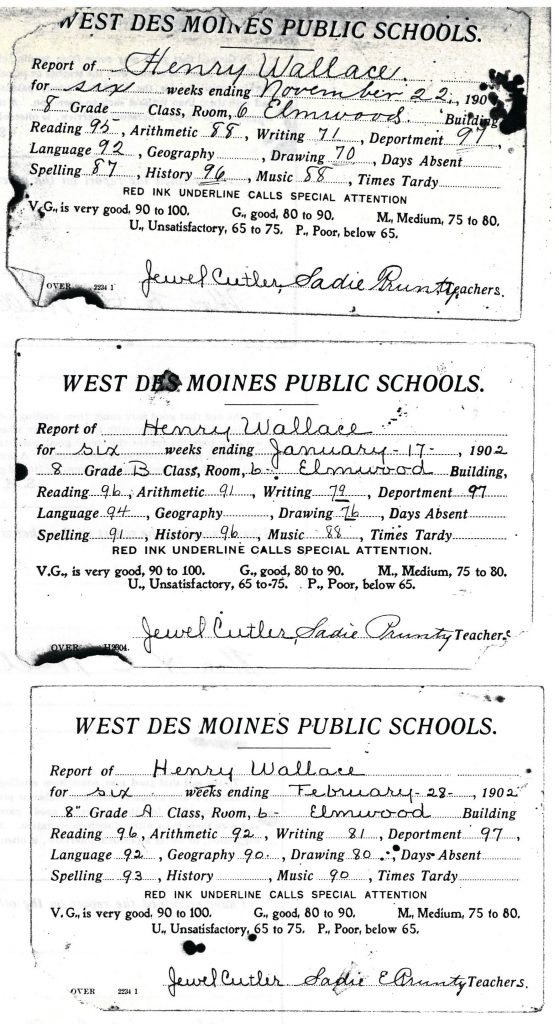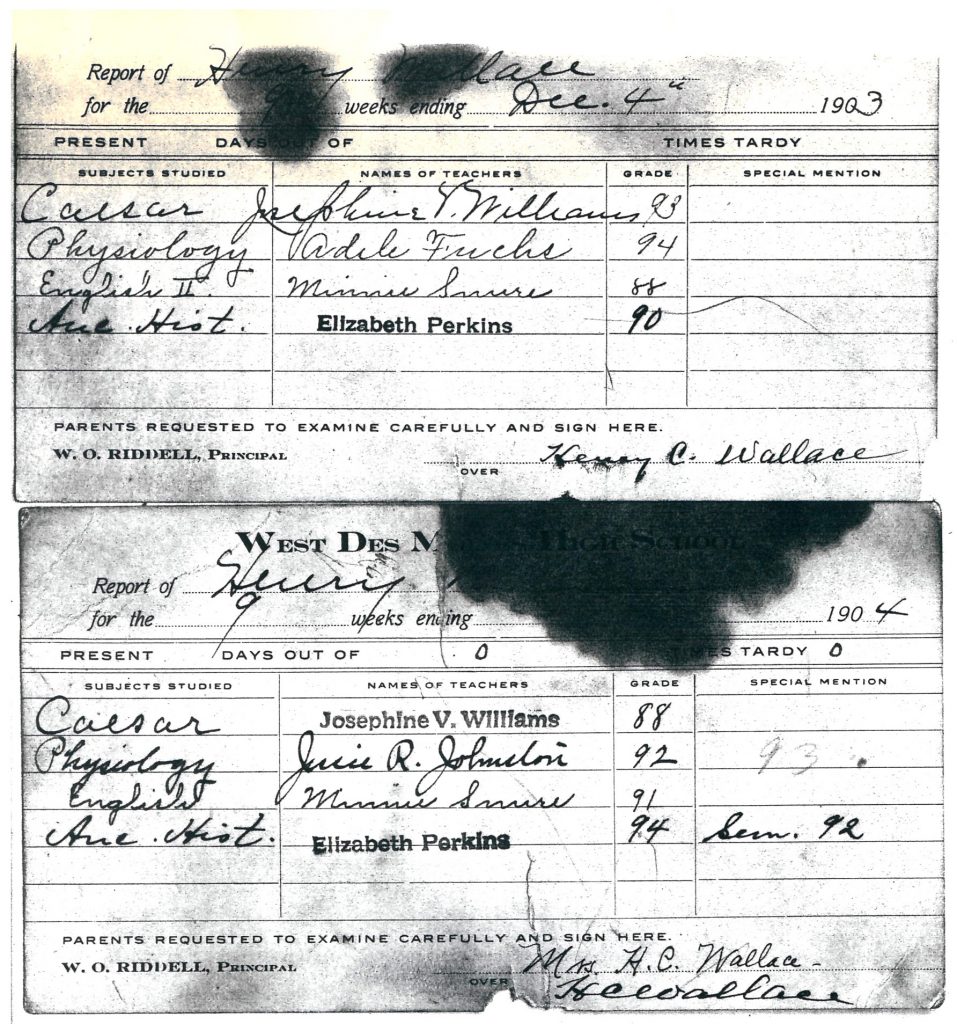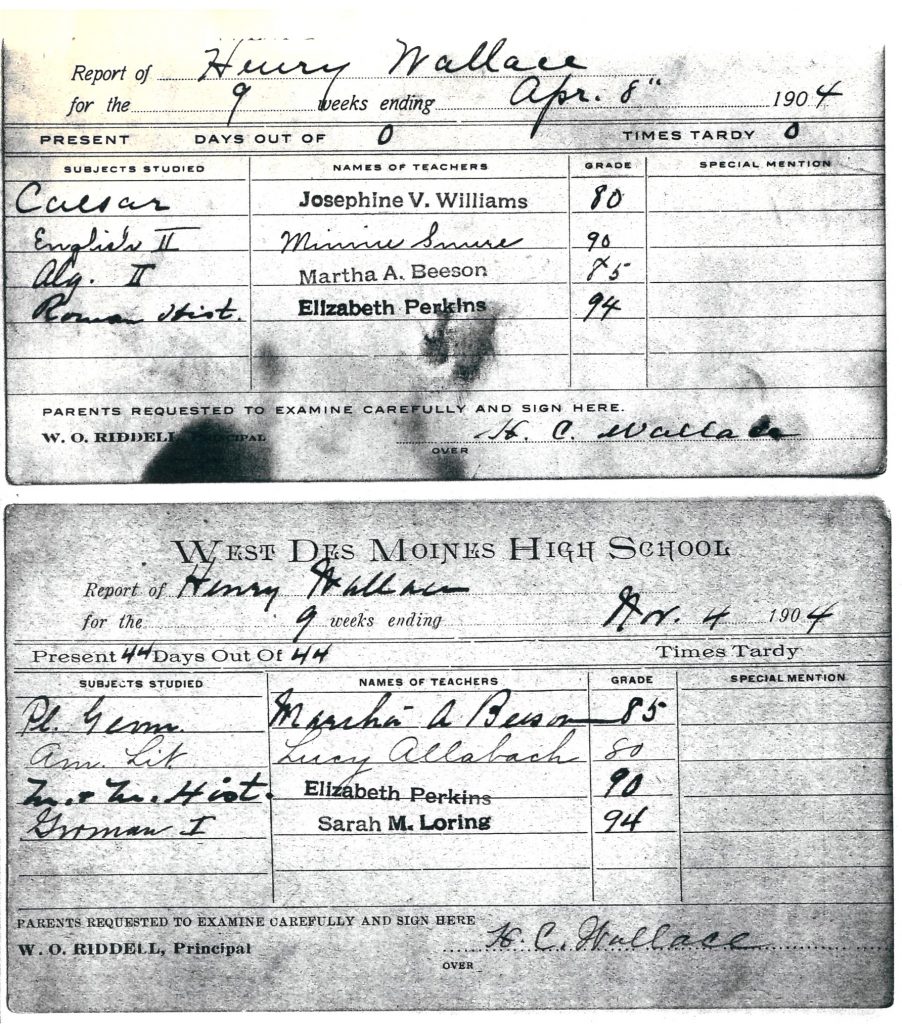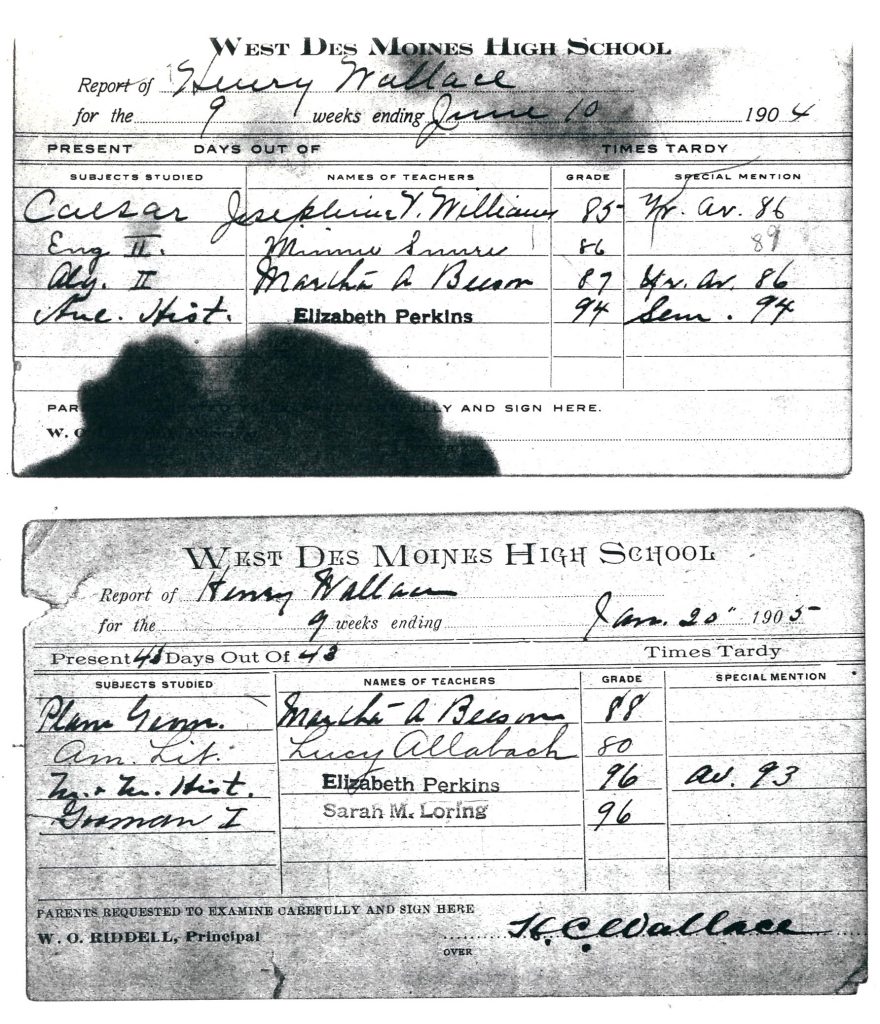An Uncommon Man
Editor of Wallaces’ Farmer 1921 – 1933
Founder, Hi-Bred Corn Company 1926 (known for generations as Pioneer Hi-bred
U.S. Secretary of Agriculture 1933 – 1940
U.S. Vice-President 1941 – 1944
U.S. Secretary of Commerce 1945 – 1946
The third Henry Wallace, Henry A., was born on the family farm in Adair County, Iowa near Orient. Because of the farm’s isolation, he had no interaction with other children except his younger sister until he was four years old. The family moved to Ames, Iowa in 1892. Henry A. developed his interest in plants, encouraged by his mother and college student George Washington Carver.
In 1896, the family moved to Des Moines, Iowa when Wallaces’ Farmer began publishing weekly. Henry attended Elmwood School and West High School at 15th and Center, a block east of his grandparents’ home at 16th and Center.
At the turn of the 20th century, corn shows were at the height of popularity, and judging criteria stressed physical uniformity of ear and kernel type. In 1903, Henry A. participated in a corn judging short course, and when he questioned the value of the “beauty contest” in predicting the yield, the instructor encouraged him to plant each of the 40 ears on an ear-to-row basis the next season and compare yields.
Wallace grew his first experimental plot while still a high school student and found that the ear which had placed first in the show yielded among the poorest. He chose some of the best-yielding seed and sold 10 bushels for $10 per bushel. This was the start of his life-long involvement with the improvement of corn through genetic selection.
Henry A. graduated from West High in 1906 and attended Iowa State College. While at Iowa State, he began writing for Wallaces’ Farmer and continued his experiments with corn. After graduation in 1910, he went to work for the paper. In 1914, he married Ilo Browne of Indianola, Iowa. They had a milk route and farmed south of Des Moines in Warren County. With Ilo’s small inheritance, the couple bought a farm near Johnston, Iowa. Henry A. continued with more methodical development, which he wrote about frequently in Wallaces’ Farmer.
In 1920, he helped establish the Iowa State Corn Yield Tests, reporting the annual results in Wallaces’ Farmer. When his father left for Washington, D.C. as Secretary of Agriculture in 1921, Henry A. became editor. He established the State Corn Husking Championships in 1921 and the Master Farmer Awards in 1927.
In 1929, while Henry A. was on a trip to Europe, his uncle John Wallace, who was the business manager of Wallaces’ Farmer, arranged and approved the purchase of the Iowa Homestead, the same paper that Uncle Henry had left to start Wallaces’ Farmer. The new publication, called Wallaces’ Farmer and Iowa Homestead, had a combined circulation of 250,000, but the inaugural issue was one week before the stock market crash.
Henry A. continued as editor of Wallaces’ Farmer and Iowa Homestead until he was selected as Secretary of Agriculture by President Franklin Delano Roosevelt in 1933. Later that year, the Pierce family repurchased the bankrupt paper. Henry A.’s name remained on the masthead as Editor until 1940.
Roosevelt was re-elected in 1936, and Wallace continued his crusade to create a better life not only for farmers but all Americans. Wallace was one of the most important planners and administrators of New Deal programs. Roosevelt selected Henry A. as his running mate in 1940, and as Vice President, Wallace increasingly represented the U.S. in foreign affairs, traveling to Mexico, Central and South America, China and the Soviet Union.
He proved to be a remarkable administrator of the USDA, achieving an impressive list of accomplishments during the darkest years of the Depression, including price supports and production adjustment, crop insurance, disaster relief, soil conservation, surplus storage, rural electrification, farm credit, food stamps, and the resettlement of small farmers. During this time, Wallace was one of the most popular authors in the world, and his books were translated into many languages.
As Vice President from 1941-1945, Wallace became a world leader and popular author whose motto was “Peace, Prosperity, and Equality”. He was a controversial advocate of international relations and humanitarian aid provided through the United Nations, especially for improved food production. He was a passionate and committed advocate of equal rights, equal opportunity, and peaceful relations between nations.
Harry Truman became Vice-President in 1945, and Wallace became Secretary of Commerce, with the goals of creating full post-war employment, equal pay for equal work, stimulating foreign trade, and providing technical assistance to small businesses.
Wallace favored diplomatic relations with and humanitarian aid to the Soviet Union and China, and did not agree with Truman’s support of the military industrial complex and the Cold War. These conflicts led to Wallace’s resignation.
Wallace believed so strongly in the importance of world peace and cooperation that he became a candidate for the presidency on the Progressive Party ticket in 1948. The platform called for national health insurance, a guaranteed minimum wage, monopoly control, equal employment opportunities for women, and equal pay for equal work.
After his defeat,Wallace retired from public life to his Farvue Farm in New York state with his wife Ilo to pursue his lifelong interest in genetics, breeding chickens, corn, strawberries, and gladiolas, and working to improve food production in developing countries. Wallace maintained a busy schedule of writing, correspondence, traveling, and speaking engagements.
Wallace had seen the problems of hunger and poverty during his travels, and continued to work to promote increased production of food and provision of basic services. In late 1964, Wallace developed symptoms of amyotrophic lateral sclerosis, or Lou Gehrig’s disease. He volunteered for experimental treatment trials through the National Institutes of Health. Henry A. Wallace died at age 77 in Danbury Hospital, Danbury, Connecticut, on November 18, 1965. Final rites were delivered and ashes interred at Glendale Cemetery in Des Moines.
Henry A. Wallace’s pioneering achievements in science and agricultural reform are the lasting imprints of his life. The scientific achievements in corn and chicken hybridization have had world-wide positive benefits, and many of his achievements in agricultural reform lasted nearly 60 years.
Selected Bibliography:
Agricultural Price. Des Moines: Wallace Publishing Company, 1920.
Wallace and E.N. Bressman. Corn and Corn Growing. Des Moines: Wallace Publishing Co., 1923.
New Frontiers. New York: Reynal & Hitchcock, 1934.
America Must Choose. New York: Foreign Policy Association and Boston: World Peace Foundation, 1934.
Statesmanship and Religion. New York: Round Table Press, 1934.
Whose Constitution: An Inquiry into the General Welfare. New York: Reynal & Hitchcock, 1936.
The General Welfare. Chapel Hill: University of North Carolina Press, 1937.
Paths to Plenty. Washington, DC: The National Home Library Foundation, 1938.
The Price of Free World Victory. New York: L.B. Fischer Publication Corporation, 1942.
The Century of the Common Man. New York: Reynal & Hitchcock, 1943.
Democracy Reborn. New York: Reynal & Hitchcock, 1944.
Sixty Million Jobs. New York: Reynal & Hitchcock and Simon & Schuster, 1945.
Soviet Asia Mission. New York: Reynal & Hitchcock, 1946.
Toward World Peace. New York: Reynal & Hitchcock, 1948.
The Price of Vision – The Diary of Henry A. Wallace 1942-1946. Edited by John Morton Blum. Boston: Houghton Mifflin, 1973.
Find Out More
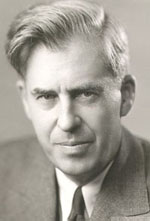
“If I were to draw conclusions from life so far, I would say that the purpose of existence here on earth is to improve the quality and abundance of joyous living.”
A Solid Student
Henry’s report cards from 1900-1905 show exactly what the young man devoted his time to: his schoolwork. During “The Reminiscences of Henry Agard Wallace”, a Columbia University Oral History, he explains that he didn’t participate in any extracurricular or social activities because after working at school and the farm every day “you don’t have enough time, you don’t have enough vigor left over, especially when you have to milk a cow every night.” Henry’s dedication paid off because he routinely earned “Very Good” (A’s) in subjects like Arithmetic, History, Reading, Language, and even Music during his time at Elmwood Middle School. Wallace continued with high marks throughout his time at Des Moines’ West High School, exceeding in courses such as German, Roman History, Algebra, English, Physiology, and American History. The classes he took at Elmwood and West helped fuel Wallace’s passion for the subjects he loved and the goals he wished to achieve.

